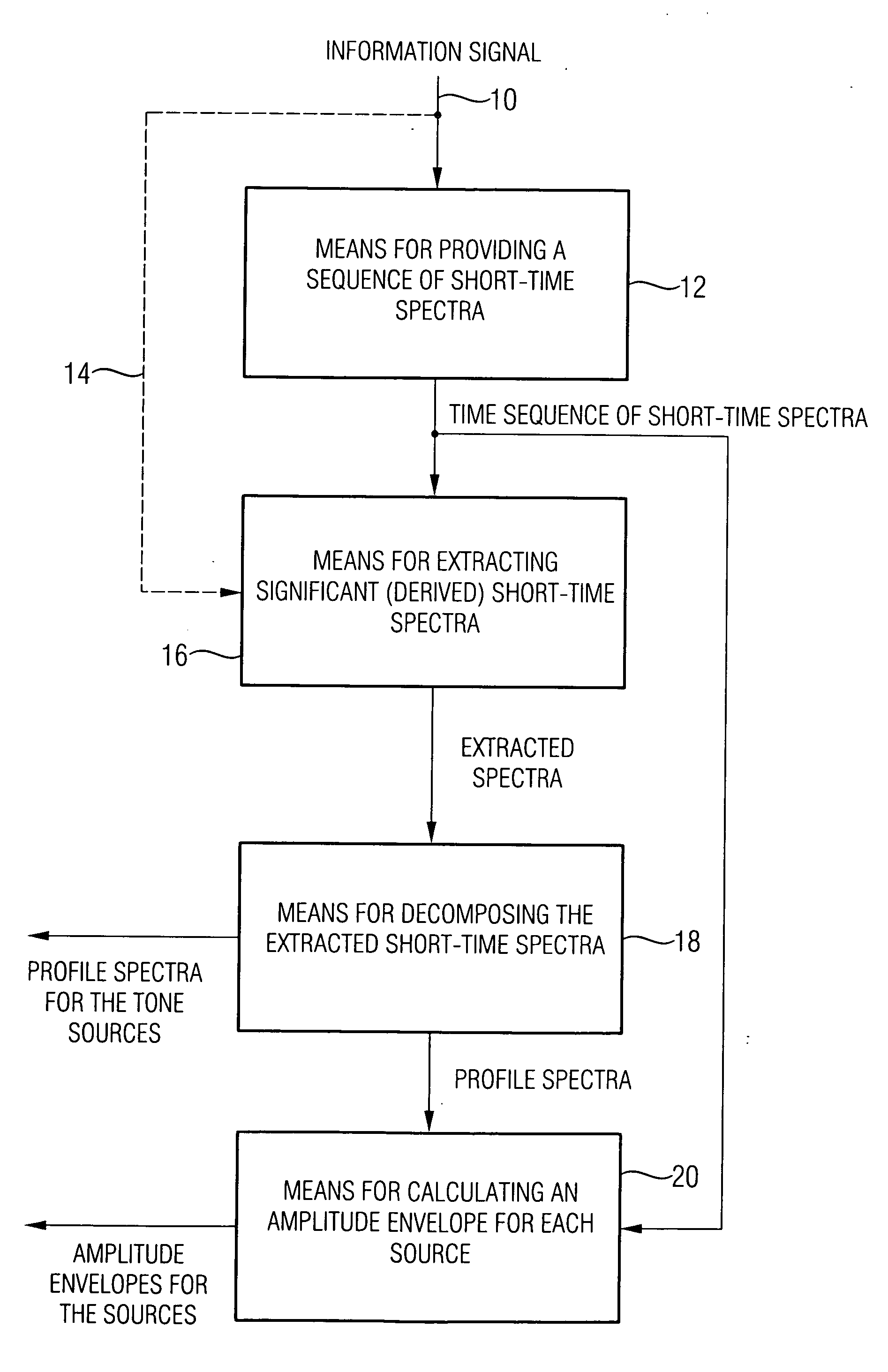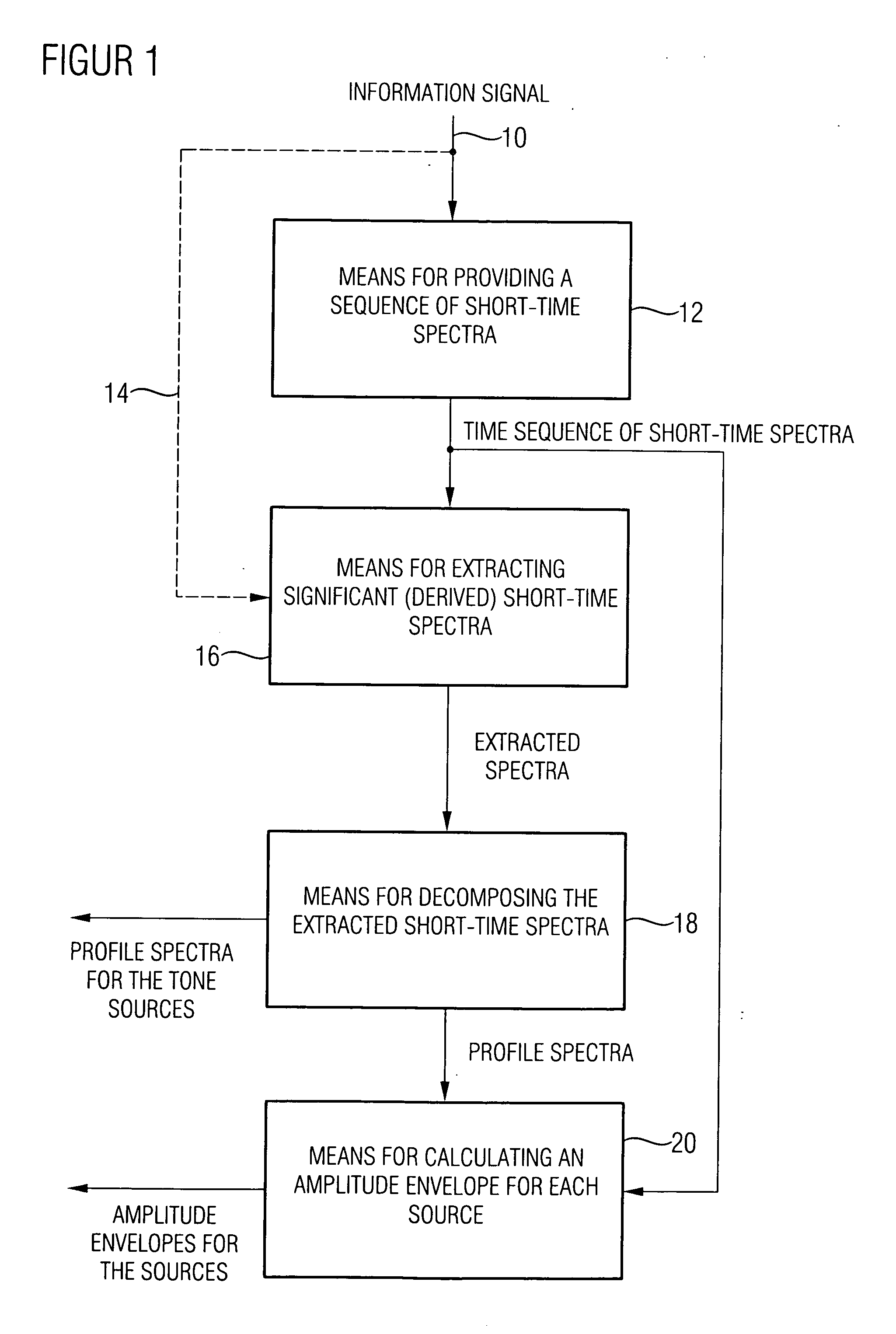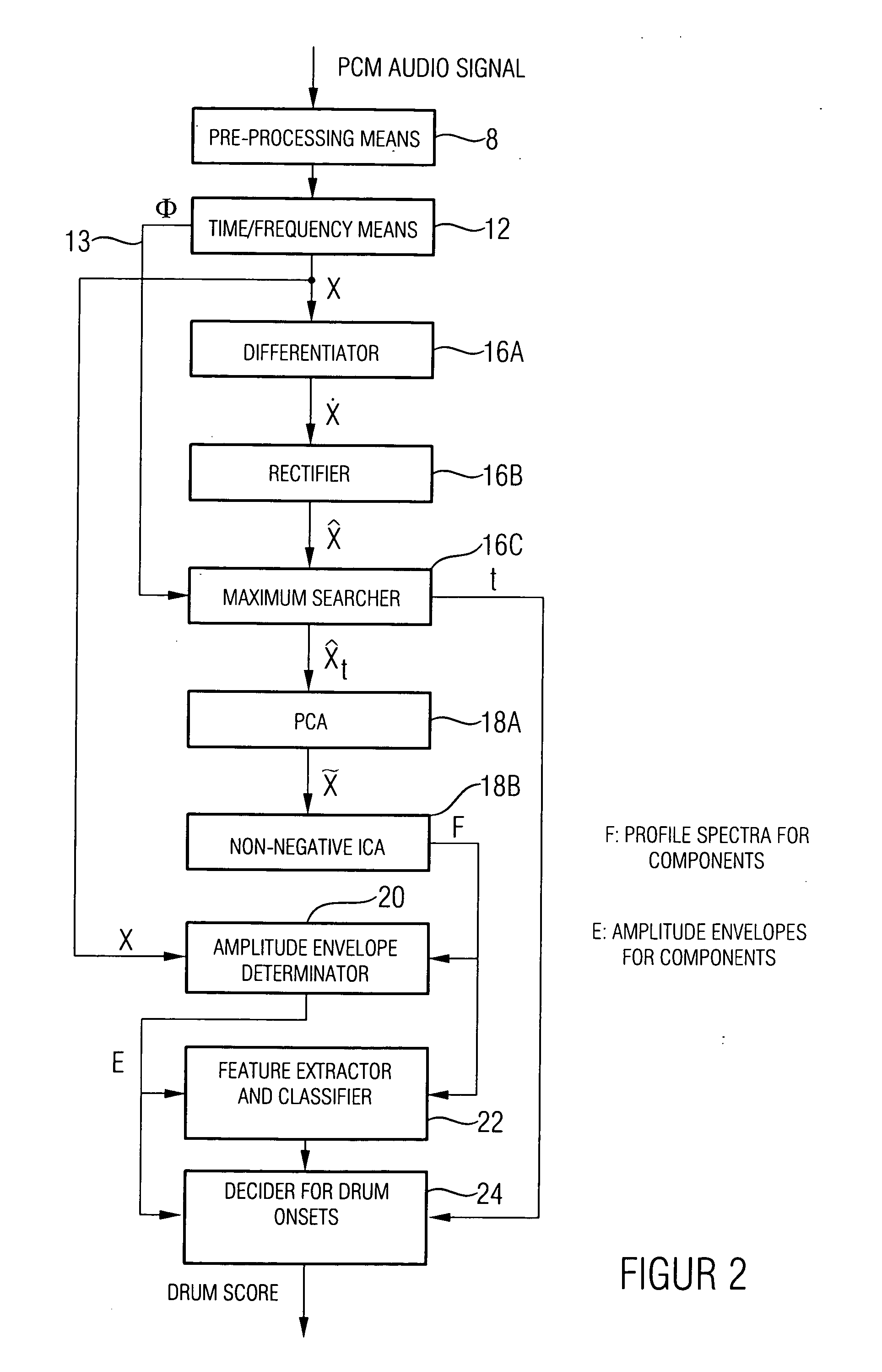Device and method for analyzing an information signal
a technology of information signal and device, applied in the field of information signal analysis, can solve the problems of large variety of data offered, large number of sources for an orchestra piece, and inability to give an actual idea of the actual, etc., and achieve the effect of reducing computing requirements and increasing robustness in finding specific-source sources
- Summary
- Abstract
- Description
- Claims
- Application Information
AI Technical Summary
Benefits of technology
Problems solved by technology
Method used
Image
Examples
Embodiment Construction
[0059]FIG. 1 shows a preferred embodiment of an inventive device for analyzing an information signal which is fed via an input line 10 to means 12 for providing a sequence of short-time spectra which represent the information signal. As is depicted by an alternate routing 14 in FIG. 1, which is drawn in dashed lines, the information signal may also be fed, e.g. in a temporal form, to means 16 for extracting significant short-time spectra, or short-time spectra which are derived from the short-time spectra, from the information signal, the means for extracting being configured to extract such short-time spectra which come closer to a specific characteristic than other short-time spectra of the information signal.
[0060] The extracted spectra, i.e. the original short-time spectra or the short-time spectra derived from the original short-time spectra, for example by differentiating, differentiating and rectifying, or by means of other operations, are fed to means 18 for decomposing the...
PUM
 Login to View More
Login to View More Abstract
Description
Claims
Application Information
 Login to View More
Login to View More - R&D
- Intellectual Property
- Life Sciences
- Materials
- Tech Scout
- Unparalleled Data Quality
- Higher Quality Content
- 60% Fewer Hallucinations
Browse by: Latest US Patents, China's latest patents, Technical Efficacy Thesaurus, Application Domain, Technology Topic, Popular Technical Reports.
© 2025 PatSnap. All rights reserved.Legal|Privacy policy|Modern Slavery Act Transparency Statement|Sitemap|About US| Contact US: help@patsnap.com



